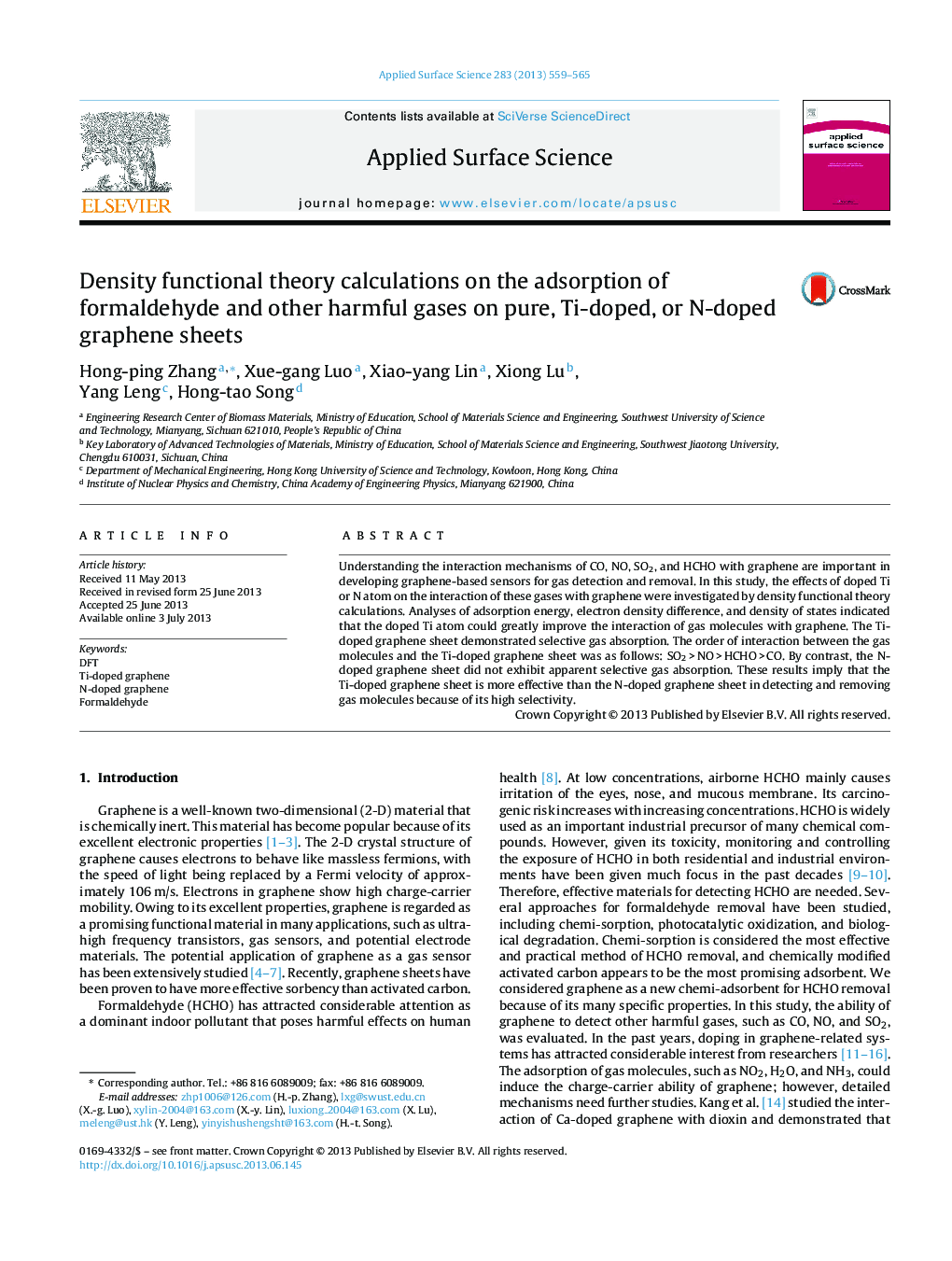| Article ID | Journal | Published Year | Pages | File Type |
|---|---|---|---|---|
| 5353944 | Applied Surface Science | 2013 | 7 Pages |
Abstract
Understanding the interaction mechanisms of CO, NO, SO2, and HCHO with graphene are important in developing graphene-based sensors for gas detection and removal. In this study, the effects of doped Ti or N atom on the interaction of these gases with graphene were investigated by density functional theory calculations. Analyses of adsorption energy, electron density difference, and density of states indicated that the doped Ti atom could greatly improve the interaction of gas molecules with graphene. The Ti-doped graphene sheet demonstrated selective gas absorption. The order of interaction between the gas molecules and the Ti-doped graphene sheet was as follows: SO2Â >Â NOÂ >Â HCHOÂ >Â CO. By contrast, the N-doped graphene sheet did not exhibit apparent selective gas absorption. These results imply that the Ti-doped graphene sheet is more effective than the N-doped graphene sheet in detecting and removing gas molecules because of its high selectivity.
Keywords
Related Topics
Physical Sciences and Engineering
Chemistry
Physical and Theoretical Chemistry
Authors
Hong-ping Zhang, Xue-gang Luo, Xiao-yang Lin, Xiong Lu, Yang Leng, Hong-tao Song,
